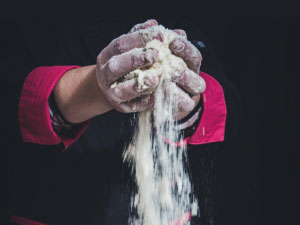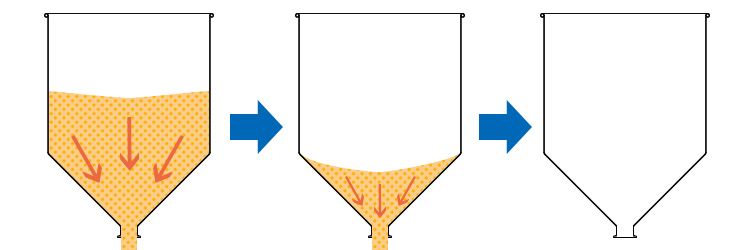It is called “have poor fluidity of powder” when the hopper used for charging the powder is clogged or cannot be discharged to the next process.
But do you know exactly what factors determine the “The fluidity of powder”?
This article provides a brief overview of the factors that influence The fluidity of powder.
What is "Fluidity of powder"?

Roughly speaking, liquidity is “ease of powder flow”.
In our company we say simply, “slippiness”.
For example, the sand inside an hourglass flows smoothly and continuously.
These powders are evaluated as “have good liquidity” and those that do not flow smoothly are evaluated as “The fluidity of powder is bad.”.
Powder with a poor fluidity of powder can clog the hopper and prevent the contents from being loaded or discharged.
Featured Articles
For more information on how to clog the hopper, such as bridge funnel flow, see here.


